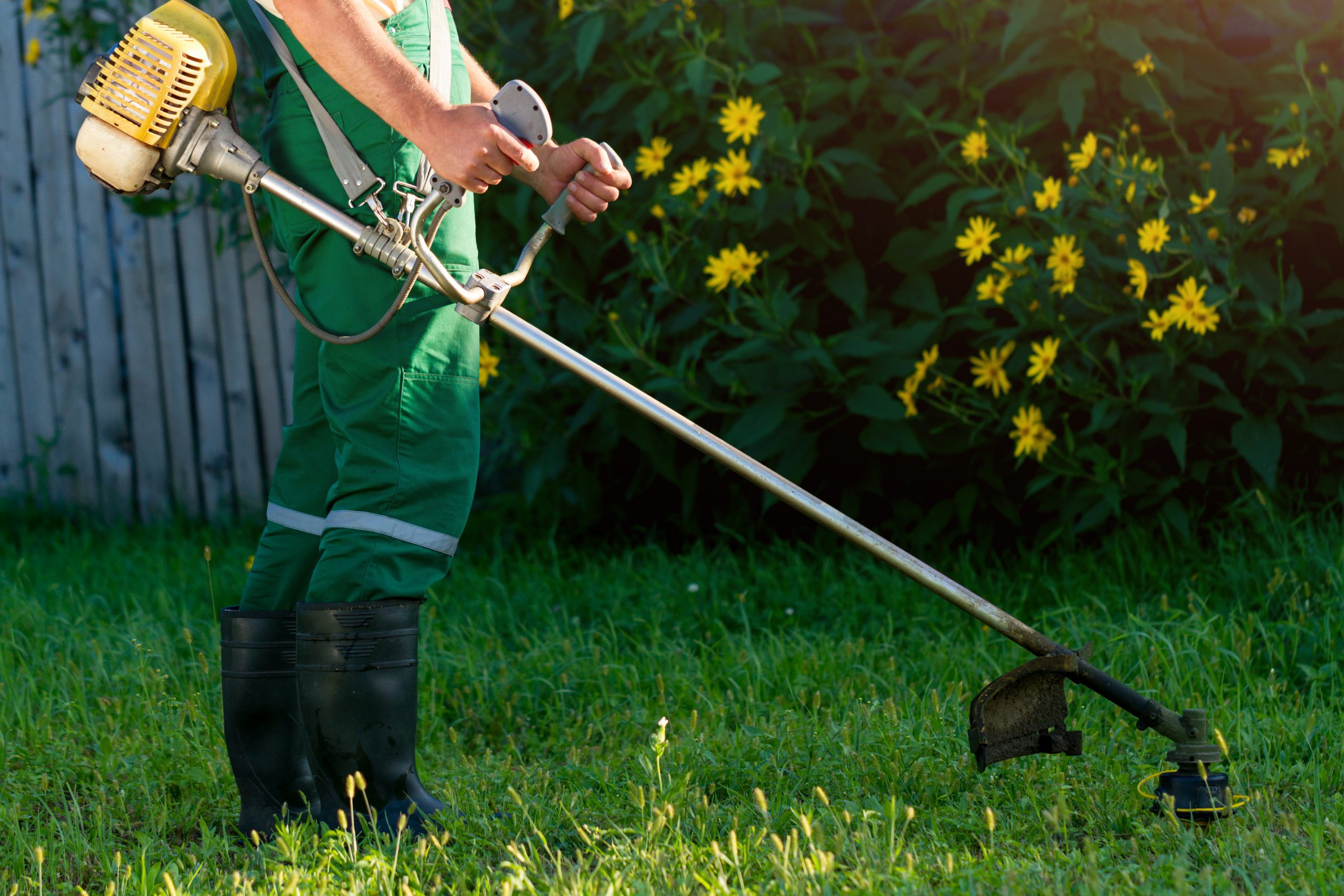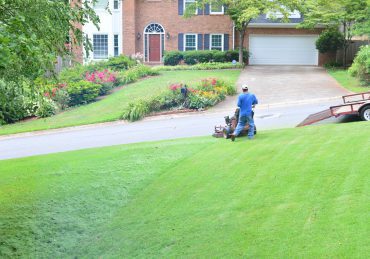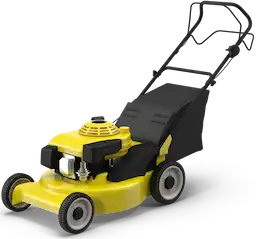Heat stress can damage a lawn considerably, especially during intense summer heat. Signs include curled grass blades, discoloration, and persistent footprints. This stress on the grass weakens the health of your lawn, making the turf more susceptible to pests and diseases. To help your lawn withstand heat, implement deep watering, aerate the soil, water your lawn early in the morning, overseed bare patches, and apply a balanced fertilizer. Additionally, protect your lawn with proactive measures against future heat and drought. Discover further tips and techniques for lawn care recovery to guarantee lasting vigor.
Signs of Heat Stress in Your Lawn
<div class=”embed-youtube” style=”position: relative; width: 100%; height: 0; padding-bottom: 56.25%;”><iframe style=”position: absolute; top: 0; left: 0; width: 100%; height: 100%;” src=”https://www.youtube.com/embed/Y-6N5aHvXqI” title=”YouTube video player” frameborder=”0″ allow=”accelerometer; autoplay; clipboard-write; encrypted-media; gyroscope; picture-in-picture; web-share” allowfullscreen></iframe></div>
A heat-stressed lawn exhibits several signs that indicate it is struggling to deal with heat and drought stress.
Key indicators include curling grass blades, discoloration ranging from gray to dark green, and visible footprints. These are early warnings that heat stress occurs and grass needs immediate care.
What Does a Heat-Stressed Lawn Look Like?
When stress occurs, observers may notice:
- Foot impressions that linger after walking
- Discoloration, shifting from gray to dead grass
- Curling grass blades with brown tips
- Brown patches potentially signaling pest infestations
- Difficulty inserting a screwdriver into dry, compacted soil
These are all signs of drought stress and heat-stressed grass, often leading to shallow root growth and increased water loss through evaporation.
Key Indicators of Lawn Heat Stress and Drought Damage
Identifying these indicators early helps keep your lawn healthy. Key symptoms of lawn heat stress and drought stress include:
- Persistent footprints
- Graying or browning of grass
- Dry, cracked soil
- Thinning or bare turf
- Grass taller but limp and brittle
Recognizing these signs allows timely intervention before stress on the grass worsens.
Why Heat Stress is Bad for Your Lawn
When temperatures rise, heat stress can quickly become bad for your lawn. Consequences include:
- Shrinking grass blades and root systems
- Loss of color and vitality in the grass
- Increased pest activity
- Dehydrated soil, leaving the soil dry and unable to support grass growth and development
- Greater chance of disease due to weakened turf
A lawn more vulnerable to these factors will deteriorate rapidly without proper care.
How to Revive a Heat-Stressed Lawn
To help your lawn, follow a recovery plan that promotes deeper root growth and improves soil health. This includes:
- Water your lawn deeply and consistently
- Aerate compacted soil
- Overseed with heat-tolerant grass types
- Apply compost or topdress with a layer of organic mulch
- Use a balanced, slow-release fertilizer
Each step plays a role in improving the health of your lawn and increasing its resistance to future heat stress.
Deep Watering and Recovery Irrigation Schedule
A smart watering plan can make or break a heat-stressed lawn. Effective recovery requires:
- Watering 1/3 inch every other day
- Water your lawn early in the morning to minimize water loss through evaporation
- Use a wetting agent to retain soil moisture
- Post-seeding, water daily
- Monitor soil moisture with tools like screwdrivers
This prevents leaving the soil dry and promotes deeper root growth for long-term health.
Aeration and Overseeding to Boost Turf Density
Aeration and overseeding are vital in recovery. These practices:
- Open the soil to oxygen and water
- Reduce stress on the grass
- Improve grass growth and development
- Fill bare spots with heat-resistant grass plants like Tall Turf Type Fescue or Bermuda
- Should be completed in late summer to maximize results
Fertilization and Topdressing for Root Repair
Rebuilding your lawn’s root system involves both nutrient replenishment and soil enhancement:
- Apply slow-release fertilizer in fall
- Topdress with compost to add nutrients and moisture retention
- Leave grass clippings on the lawn to boost organic matter
- Mow with a sharp mower blade, keeping grass taller to reduce heat exposure
These steps support essential processes like photosynthesis and root repair.
Protect Your Lawn From Future Heat and Drought
Prevention is key. To protect your lawn from repeat heat stress, follow these strategies:
- Use heat-tolerant turfgrasses such as Tall Fescue, Thin Fescue, and Kentucky Bluegrass
- Conduct a soil test before planting
- Water consistently and water your lawn deeply
- Mulch around trees and shrubs with compost or wood chips to cool soil
Structures can temporarily relieve heat stress in areas with limited natural shade, helping your local lawn recover faster.
Choosing Heat-Tolerant Turfgrasses
Choose grass that can handle extreme heat and drought. Options include:
- Bermuda for southern lawns
- Tall Fescue for cooler regions
- Thin fescue for shady spots
- Overseed in late summer
- Base decisions on soil testing
These varieties are resilient and require less water, ensuring a healthy lawn even during summer heat.
Seasonal Lawn Care Calendar for Extreme Weather
Create a plan tailored to changing conditions:
- Summer: Water your lawn deeply once or twice a week
- Fall: Aerate, fertilize, and overseed
- Winter: Mow less, clean up grass clippings
- Spring: Begin with light watering and spot-treat drought stress
This approach helps your lawn withstand heat stress and remain vibrant year-round.
Let LawnGuru Help You Revive a Heat-Stressed Lawn
LawnGuru offers tailored services that understand the complexity of lawn care during heat stress. Services include:
- Expert watering schedules based on your lawn’s needs
- Aeration, overseeding, and fertilization
- Adjusting your mower height and blade sharpness
- Identifying and managing pests and diseases
- Reliable help to keep your lawn thriving
Trust LawnGuru to help your lawn recover from heat-stressed conditions and build long-term health.





